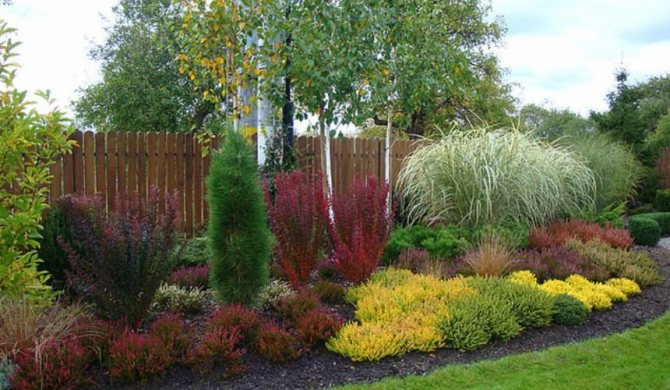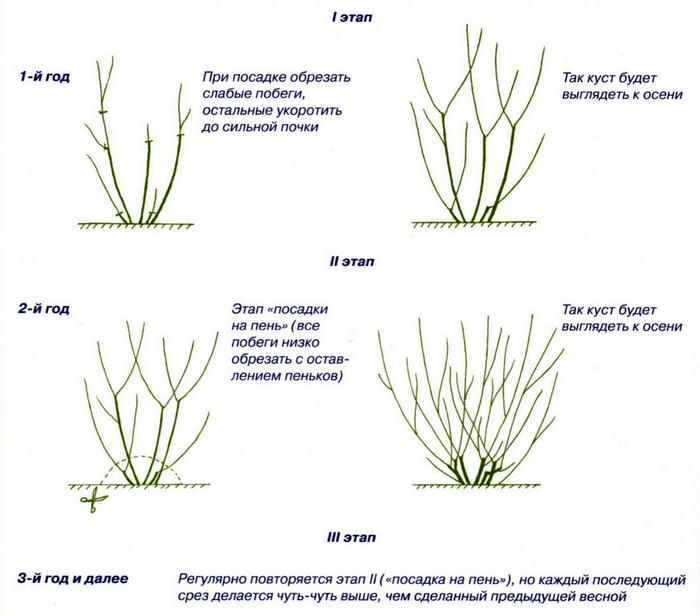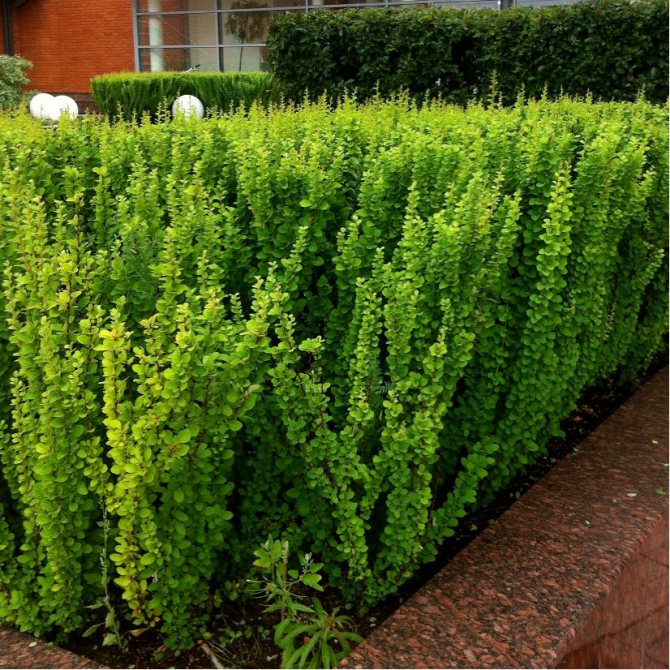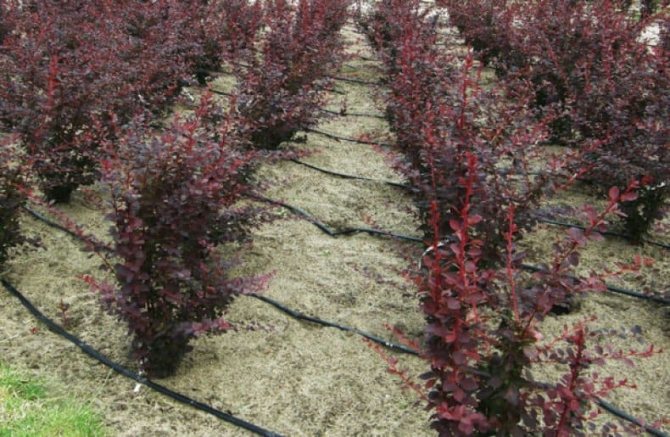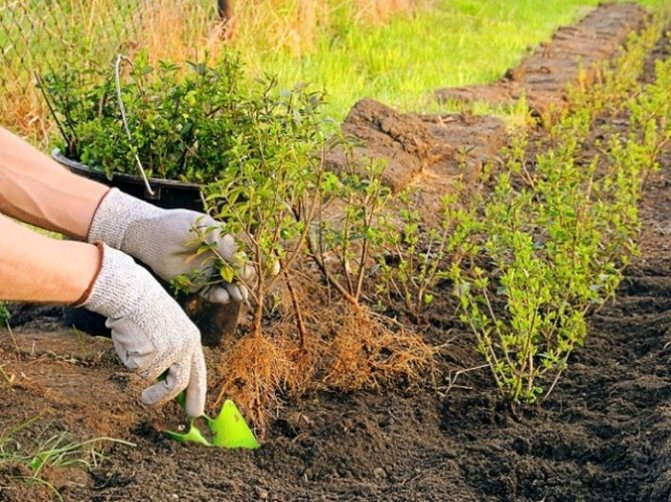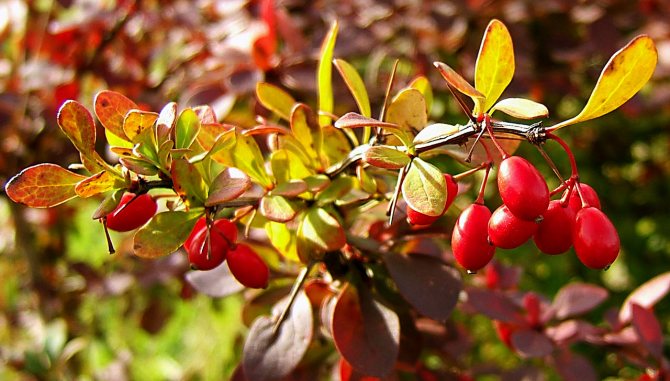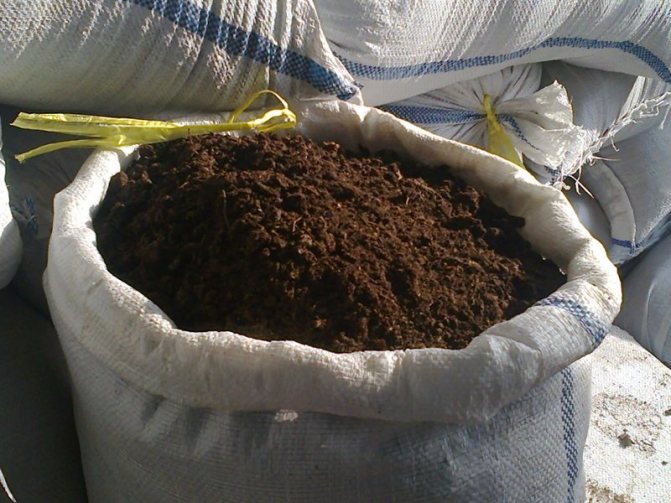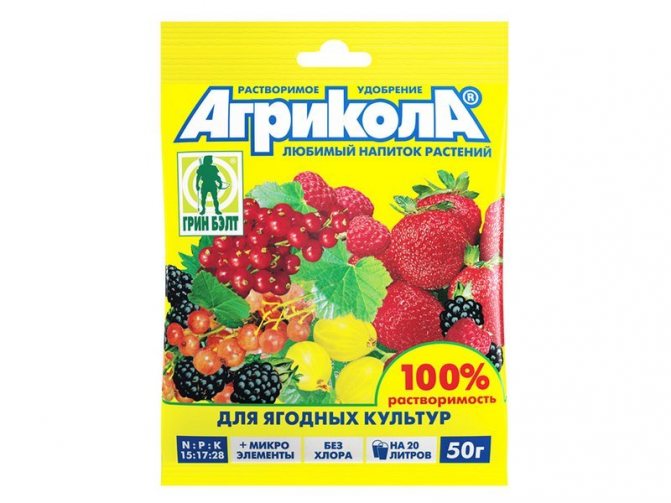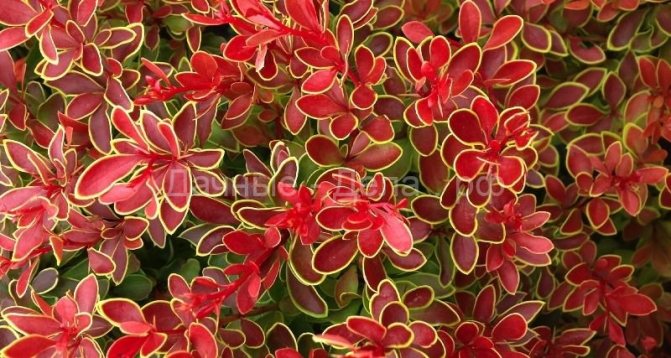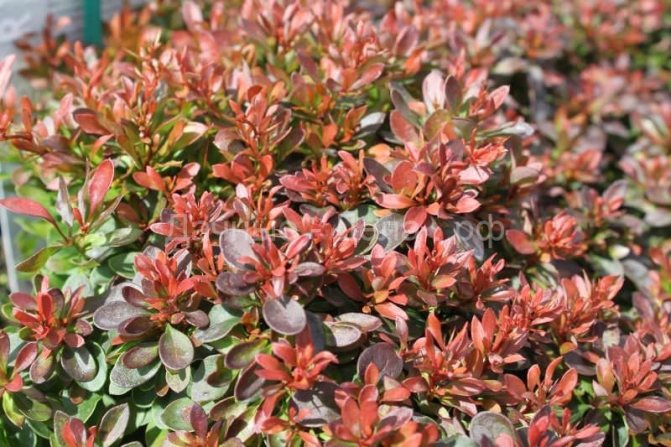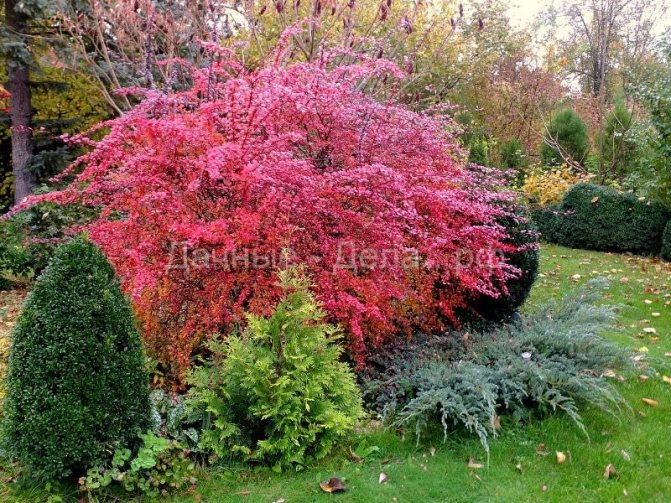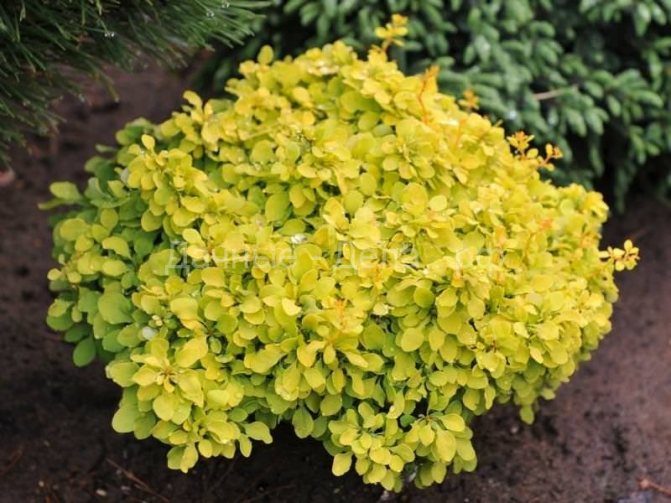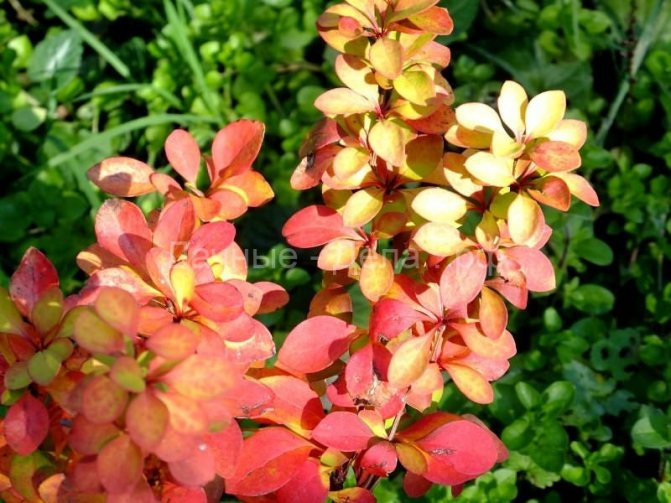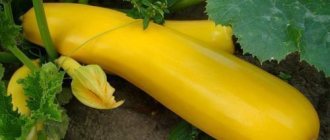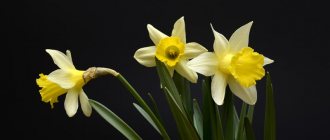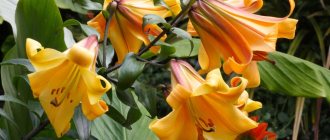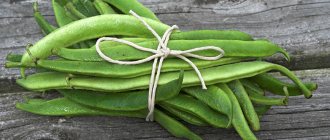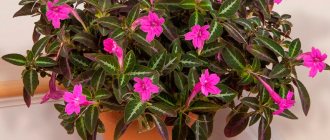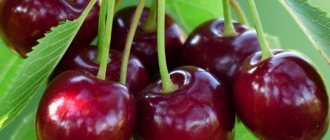Probably, everyone in childhood loved "Barberry" sweets, which had a unique taste and aroma. How surprising it was to find that the fruits that formed the basis of this delicacy grow on attractive bushes, and that you can grow this plant in your country house. So let's get to know him, or rather, with one of his varieties - Ottawa Barberry. Let's find out what its varieties are. How to plant and care for a plant correctly. We will also see how to create a beautiful landscape design with its help.
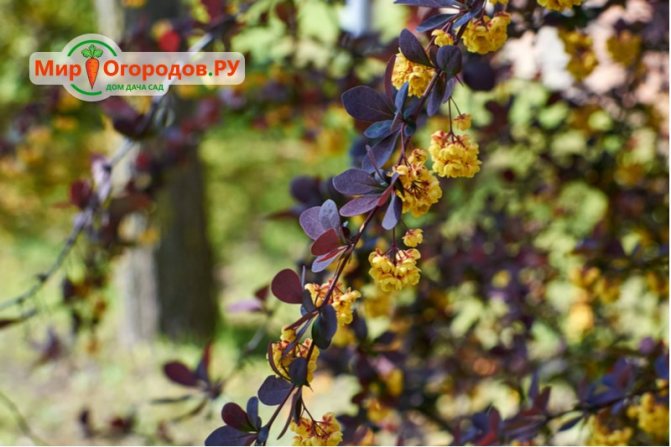
Ottawa barberry - will decorate any site
What does a barberry look like and how it blooms: photos and descriptions of species and varieties
Most often used in landscaping:
A relatively large common barberry (B. vulgaris) and its purple-leaved 'Atropurpurea' shape. The common species is also widely known as a fruit plant;
Barberry Thunberg (V. thunbergii), which many gardeners are engaged in reproduction, has especially many decorative forms and varieties, differing in the color of the leaves and the size and shape of the crown;
Ottawa barberry (V. x ottawensis), which is a hybrid of the first two species.
Bushes are undemanding to soil. They tolerate drought better than excessive moisture. They can tolerate partial shade, although in the light they more fully manifest their decorative qualities. Propagate well by summer cuttings.
Due to its beauty, variety of shapes and colors, the plant can be used as a single planting of decorative barberry, in small groups or for creating hedges. Most species go well with other shrubs. Low-growing conifers are the most common barberry garden neighbor. The plant goes well with alpine slides, and also as a central shrub when decorating flower beds.
Growing barberry in the garden is not a hassle for its owner.
Any variety of barberry bush is incredibly attractive. Many gardeners are confused by the variety of species of this plant. But in order to determine the choice, it is recommended to focus on the goal that you are pursuing.
If you want the plant to delight you with delicious berries, then these are some varieties. If you want to decorate your garden, use decorative types. Further in the article we will talk about barberries of different varieties with a photo and a description of the features of each. We have already mentioned them above. Note that each species presented by us copes well with both tasks: it will decorate your garden and produce edible, tasty fruits.
Common barberry - one of the most common plant species. Reaches a height of up to three meters. The leaves are elliptical, with a gray-green color on the inside, and dark green on the front. The bushes have shoots of a gray-brown color, with spines up to 2 cm. This species blooms for 3 weeks. The inflorescence has a racemose shape up to 6 cm, consists of fragrant flowers of a yellow hue. The fruits reach 1.5 cm in length and have a bright red hue.
Common barberry has quite a few subspecies:
Aureo-Marginata
Albo Variegata
Asperm
The last representative of a plant of this species has a fruit without a seed, which makes it easier to process.
See what the types of common barberry look like in the photo.
The Thunberg variety can be considered a leader among decorative barberries.
If we compare it with the previous type, then its size is much smaller. An adult bush reaches a height of no more than 1 m. The branches of the bush spread horizontally. Depending on the variety, young shoots of the plant can be bright red or even yellow, which later turn brown. The foliage is ovoid, slightly elongated, the average length reaches no more than 3 cm.
In summer, the bush has a bright saturated green color due to the color of the leaves, by autumn it becomes bright red.
The color lasts no more than 2 weeks. During this period, the bush acquires a reddish-yellow tint. The flowers of the barberry bush of the Thunberg variety have a double color: from the inside the petals are yellow, from the outside they are bright red. Ellipse fruits reach 1 cm in length, have a coral shade and ripen in early autumn. If they are not collected, then they can hold out on the branches until the first serious frost. Barberry Thunberg, the care and cultivation of which does not require special knowledge or skills, will give a different, more aesthetic look to your personal plot. This species also has many hybrid varieties that are considered decorative: multifloral, silver-bordered, dark purple, etc.
See how the Thunberg barberries look like in the photo.
Ottawa variety - is a shrub that combines the qualities of the first and second types.
This species is perfect for regions with fairly severe winters. In terms of external characteristics, this plant is similar to Thunberg, but in an enlarged form. Its height reaches 2 m. But the leaves are closer in color and shape to an ordinary species. They have a pink-purple hue, which turns almost black in the sun. On autumn days, when most of the colors in the garden wither, the bush will become the most beautiful, as its leaves take on a crimson hue and stay on the branches for a long time.
Ottawa barberry, its types and varieties are presented in the photo:
Description of the plant
Most varieties of barberry are small (up to 2.5–3 m high) deciduous shrubs. There are also evergreen species, but they are quite rare. The varieties are very different due to the variety of leaf shapes, their color, sizes and shades of fruits. But there is also a common feature - the presence of often located strong long (up to 2 cm) thorns. They literally dot the shoots, making it very difficult to harvest and care for the plant.
The thorns are nothing more than modified leaves, of which only one central vein remains.
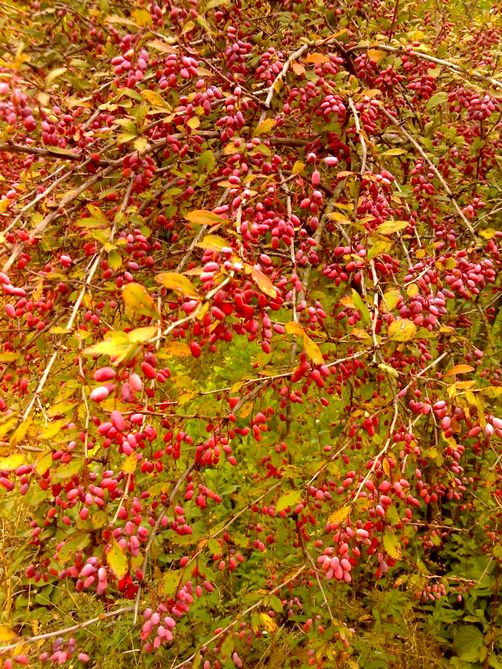

Barberry in nature is extremely widespread
Barberry looks very attractive throughout the season, therefore it is widely used in landscape design. The plant can be cut to any desired shape. The most common hedges, barberry curbs and single figures. The shrub "holds" the soil well, protecting it from erosion. Low-growing varieties look good in alpine slides and rockeries.
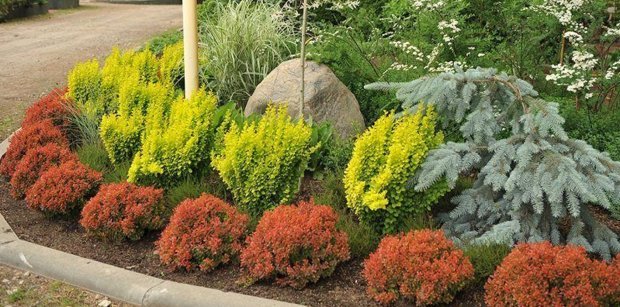

Barberry is widely used in landscaping - alone or in combination with other plants
The bark on the shoots is gray, in adult plants it has shallow furrows. The wood is bright yellow. The leaves of the barberry are medium-sized, oval, sharply tapering to the petiole, rather dense, but not leathery. The edge is even or cut with small teeth. In summer they are bright green or lime colored. In autumn, the leaves change tone, acquiring different shades of scarlet, crimson, orange-red, crimson-pink, purple, less often yellow.
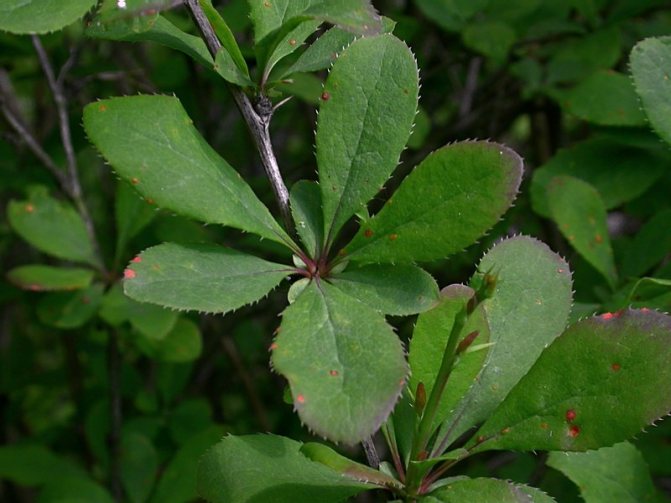

The leaves of the barberry are medium-sized, oval, sharply tapering to the petiole
The flowering bush is also pretty.The buds open in late May or early June. The flowers are small, clustered in inflorescences in the form of falling brushes 8–10 cm long. Petals are golden yellow, saffron, light orange. They give off a characteristic tart aroma that attracts many bees.
Barberry honey is not as common as, for example, buckwheat or linden honey, but it is no less useful.
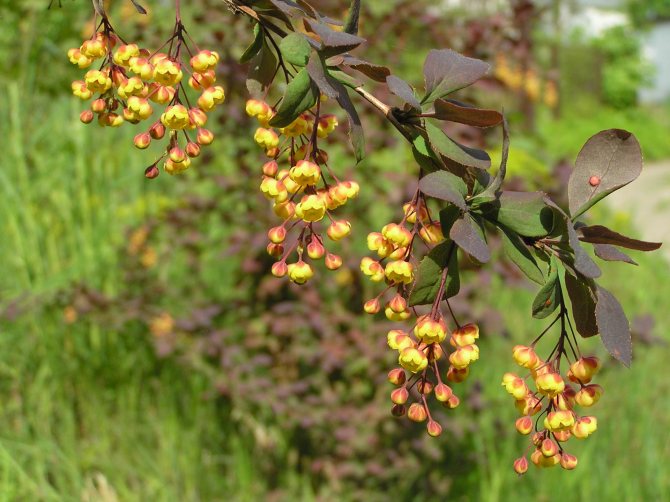

Blooming barberry is also very decorative.
Small berries (drupes) ripen at the end of September or in the first half of October. Their shape is elongated, oval. The length varies depending on the variety, but rarely exceeds 1 cm. The fruits, with very rare exceptions, are painted in a bright scarlet color. There are only a few varieties with black-purple berries covered with a bluish-blue bloom. The taste is quite pleasant, sweet and sour. There are many large seeds in the pulp. Young leaves, which are suitable for food, have the same refreshing sour taste. In no case should you eat unripe barberry, such berries are poisonous.


Barberry fruits are very high in vitamin C
In addition to fresh consumption, berries can be dried, cooked preserves, compotes, jams, jelly, and marshmallows. Sour taste is very appropriate in various sauces for meat and chicken.
Barberry is widely used in folk medicine. All parts of the plant are used. The increased content of vitamin C makes it indispensable for strengthening the immune system. Barberry berries are an effective prevention of diabetes, heart and vascular diseases. There are also contraindications. Barberry is not recommended for women at any stage of pregnancy, especially if there is a threat of miscarriage, as well as hypotensive patients.
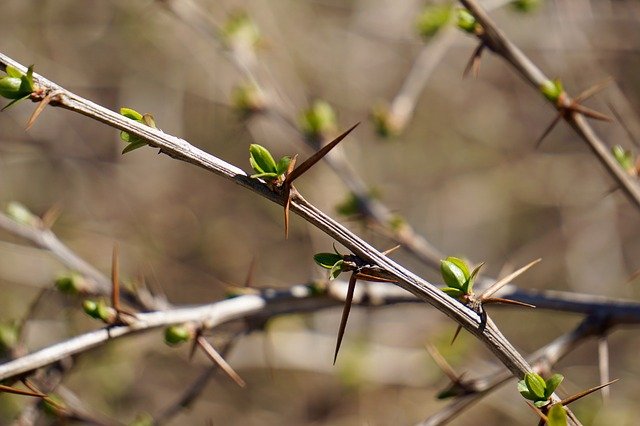

Spines on the shoots of barberry - leaves modified during evolution
Growing conditions for barberry: how to plant and care for a shrub
Decorative barberry, which even an inexperienced gardener can take care of, differs little depending on the type of plant or its variety. Therefore, it is enough to get acquainted with all the subtleties once and you can safely grow different types of such plants, regardless of its form.
You can find ideal growing conditions for barberry in any garden. When choosing a place for the further growth of a plant, give preference to not too dark places, but he does not like abundant sunlight either. Partial shade is considered ideal for these bushes. In such a place you will see all the brightness of the colors of the leaves and flowers of the barberry.
Planting and caring for a plant does not take much time and mainly consists of:
- the correct selection of the method of planting shrubs;
- ensuring timely watering, loosening the soil, cleaning weeds;
- shrub trimming;
- top dressing.
If you live in an area with sufficient rainfall, then water the plant as the soil dries up. Watering is especially important during the summer months for the southern regions of the country, where it does not rain long enough. Provide your barberry shrub with a care that includes weekly watering. Do this with water that is not too cold. It is better if it is water that has warmed up in the sun, and not just taken from a tap or from a well. Water should be poured under the root of the plant, being careful not to get on the leaves of the barberry.
See the subtleties of care and watering in the photo:
It is important to remember that in the first few weeks after planting, watering should also be carried out weekly, until the ornamental barberry is completely rooted. Planting and care in the future implies the absence of stagnant water in the soil. Therefore, it is important not to overdo it with watering.
Also, weeds should be removed in time in the area around the bush. Pay special attention to the growth that will appear near the barberry bushes. It must be eliminated in time. Loosen the soil around the bush from time to time.
Fertilized barberry shrub during planting does not require more maintenance than indicated above. Provide him with timely watering and air supply to the soil.This will be enough for a young plant. But after a year, it is advisable to do this in the spring, it should be fed with nitrogen fertilizers. To do this, dissolve no more than 30 g of urea in a bucket of water. Further, it is enough to do this no more often than once every 3 years. But such a top dressing will be acceptable for ornamental shrubs. If you also want to get healthy fruits with good edible qualities, then feed each bush with phosphorus and potassium, in a ratio of 1: 1.5.
Pruning, as with other shrubs in the garden, consists of removing loose or dry shoots. This process carries with it health-improving and aesthetic aspects. Remember that barberry bushes have sharp thorns, so use mittens and be very careful when pruning.
The first pruning of branches can be carried out in the spring on a one-year-old barberry.
Look at the photo and read the description of how to do this:
This pruning is used only for tall varieties of barberry. All shoots must be shortened by almost 2/3 or half. Dry branches are removed completely.
This will help form a decorative shrub that looks aesthetically pleasing.
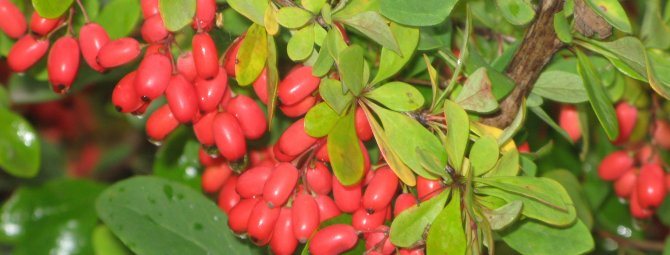

Barberry is one of the most picturesque shrubs. But gardeners love culture for more than just its flamboyant appearance. Its berries are used for making hot and cold drinks and preserves. Confectioners and culinary specialists use barberry as a spice, as well as for decorating cakes and pastries. This shrub is popular in many regions of our country. Correct planting is one of the points of action for a good harvest.
Evergreen species of barberry
Evergreen barberries include shrubs of different types that differ from each other:
- bush shape;
- frost resistance;
- cultivation features;
- resistance to urban conditions.


A living fence made of evergreen barberry is replete with thorns, but at the same time it is incredibly beautiful
Barberry Darwin
This species grows rather slowly, the maximum height of an adult bush reaches 2 m. Most often it is grown for decorative purposes. Darwin's barberry has bright orange-yellow flowers, in place of which black fruits with a bluish tinge appear in the fall. The leaves of the shrub are quite elegant, shiny, with small spines at the ends.
Darwin's barberry has an average winter hardiness, can withstand temperatures up to minus fifteen degrees. The shrub is recommended for cultivation in the southern regions of our country.
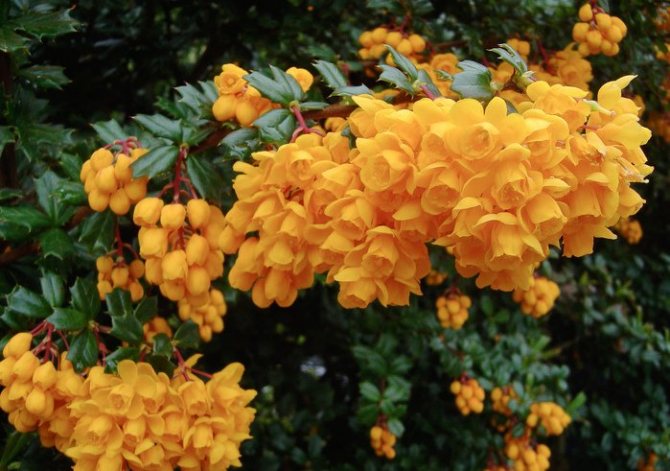

Bright orange-yellow flowers of Darwin's barberry delight the eye in any weather
You can trim the barberry shoots a little after flowering. This will give the bushes a neater and more beautiful appearance.
Barberry Freakarta
This garden hybrid is derived from the warty barberry. The flowering period of this shrub is in May. Its flowers are pale yellow, the leaves are light green, shiny. The berries are inedible, blue-black in color.
The species is quite resistant to low temperatures (up to -23 degrees), but it is recommended for growing in warm climates. Prefers sunny or partial shade places.
Barberry Frikarta is presented in two decorative varieties:
- Amstelveen - grows up to one meter in height and up to two meters in width. Shoots are prickly, arched in shape.
- Telstar is a slow-growing shrub, reaching 90 cm in circumference. The crown is dense, the leaves have a silvery underside.
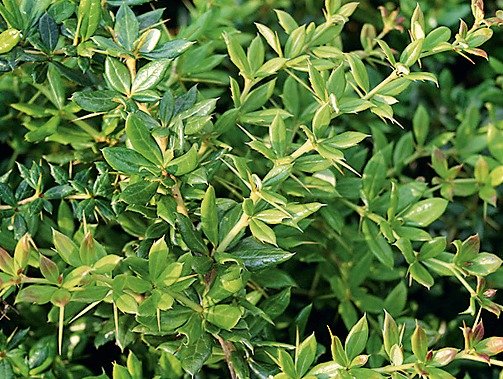

Amstelveen barberry has a very compact shape
Barberry Ganepena
Barberry Ganepena grows slowly, at the age of 10 it can reach up to two meters in height and in diameter. The plant forms elongated shoots with thorns about two centimeters long. In May, yellow flowers bloom on the branches, which can be either single or collected in inflorescences.At the beginning of autumn, they are replaced by blue-black berries, covered with a white bloom. The fruits are not good for food.
The most popular variety of this species is Klugovski. It was bred in 1960 by Alfons Klugovski in the Flein kennel (Germany). The variety is unpretentious, resistant to both high and low temperatures, as well as to the conditions of the urban environment. Doesn't like excessive moisture.
Recent Entries
Rose Petal Jam and Its 7 Health Benefits You Likely Didn't Know About What Fruit Are You According to the Zodiac Sign The 11 Best Grape Varieties That Will Help You Create Unique Homemade Wine


The dark green leaves of the Klugovski variety have jagged edges.
Juliana's barberry
A slow-growing shrub that at the age of 10 is capable of reaching up to two meters in length and up to four in width. The leaves of Juliana's barberry reach 10 centimeters, have needles at the ends. The color of the leaves is dark green, at a young age - with a bronze tint. Flowering occurs in mid-May or early June. Flowers are collected in clusters of 8-15 pieces, painted yellow with a red frame. At the end of September, black-blue fruits ripen on the bushes.
Juliana's barberry is resistant to temperature extremes, as well as to urban conditions. Prefers sunny location. Shrubs of this type are highly decorative, they are often used for landscaping areas.


The edges of the leaves of Juliana's barberry are protected by small but very prickly needles.
When to plant barberry
It is possible to plant drums in open ground in autumn and spring. But in most of the territory of Russia, gardeners prefer to plant in the spring season. In this case, the risk of seedlings freezing out is practically zero. In autumn, barberry should be planted in open ground in early September. This will allow the seedling to take root prior to the onset of frost.


Barberry is best planted in spring
Features of spring planting
Barberry is unpretentious to the composition of the soil. Therefore, it can be planted in any area. However, there are a few basic rules to follow when planting a shrub:
- Barberry is planted early, as soon as the snow melts. Planting seedlings at this time is carried out because the shrub is one of the first to wake up after wintering. Planting work must be completed before the buds swell.
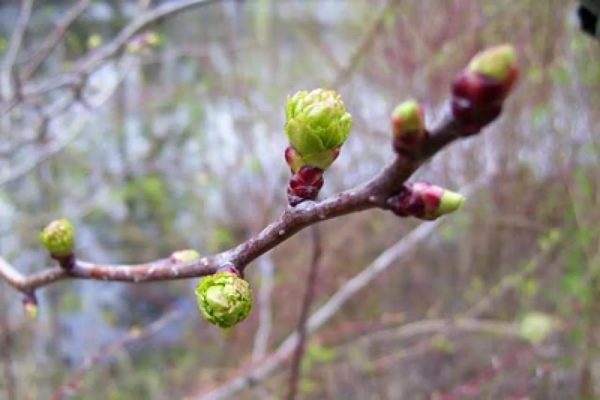

Barberry buds "wake up" early
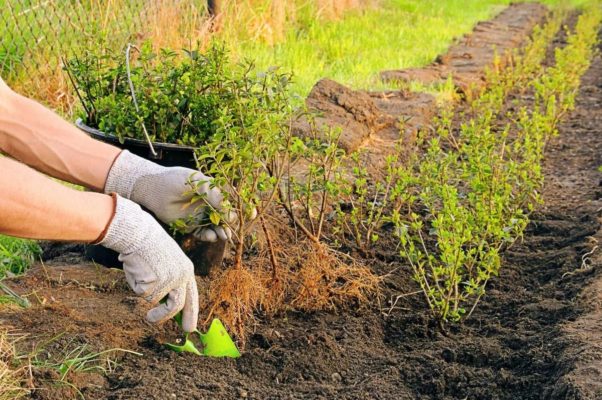

Saplings are placed at a distance of 50 cm from each other
How to plant barberry correctly
In order not to harm the shrub, you need to properly plant:
- The planting hole or trenches are prepared 2 weeks before planting the shrub.
- Half a bucket of sand is poured onto the bottom of the pit. It has a beneficial effect on the root system.
- Then the pit is filled with a mixture: soil, mixed in equal proportions with humus and peat. You should also add superphosphate (30–40 g per 1 m 2).
- The seedling is dipped into the prepared hole.
- The roots are sprinkled with earth, tamped.
- The plant is watered abundantly.
- The soil is mulched with straw, peat or sawdust.
- After planting, it is necessary to cut the seedling so that no more than 3-4 buds remain on the branches.
- In the first days after planting, the shrub must be protected from the sun.
Weather conditions also affect barberry planting. The plant is not planted outdoors on hot days. It is best to choose cloudy weather for landing.
When to harvest
Barberry is also known for its taste and medicinal properties. Moreover, all its parts are useful: fruits, leaves, bark and roots.
The berries ripen in the fall, so they are harvested during this period. They are especially tasty after the first frost. But you should not overexpose them in the cold. The leaves are harvested during flowering, which occurs in late spring and early summer.
The roots are harvested in April and also in October or November. It is better to wait for the moment when the bush is already at rest.
The bark is removed in the phase of sap flow.
How to preserve seedlings before planting
Seedlings appear on the shelves of supermarkets or horticultural centers in January-February. Planting a plant during this period is not possible for most regions. The exception is Crimea, where shoots begin to bloom at this time. However, even buying a shrub at such an inappropriate time for planting can keep the seedlings alive and well.
- After purchase, part of the wrapping paper covering the branches is removed from the seedling.
- The roots of the plant are left in the package.
- The storage temperature of the seedling should not exceed 3 o C. This is the temperature regime at which the plant is in hibernation. You can store seedlings on an unheated balcony. Also, the plant can be placed on the lower shelf in the refrigerator, designed for storing fruits and vegetables.
- In the event that the purchased seedling has leaves, it must be planted in a container and grown as a houseplant. The air temperature in the room should not exceed 22-25 o C.
Choosing a barberry seedling
First of all, it is necessary to purchase seedlings from specialized nurseries engaged in the cultivation of varietal shrubs. Only in this case you will be sure that you have bought exactly what you need. When buying, the first thing to pay attention to is the root of the plant. If the seedlings are sold with a closed root system, i.e. in pots or other containers, ask the nursery staff to lift the plant out of the ground and examine the root. It must be alive, with no signs of decay. The bark of the seedling must not be disturbed. The further development of this wonderful plant depends on the quality of the planting material.
Planting shrub cuttings
Barberry is propagated by seeds or by cuttings. To do this, select strong elastic shoots that have appeared this year. They are cut and stored from autumn to spring in the refrigerator. Gardeners try to avoid unripe cuttings as they can rot.
Lignified branches of barberry take root more difficult than young ones.
For grafting, use the middle parts of the branch. The diameter of the shoot should be about 5 mm. When cutting, the length of the cutting is from 8 to 10 cm. Gardeners divide the shoots into parts so that there are 2 nodes and 1 internode on the cutting. If the stalk is short, then 2 or 3 leaves are left on it.
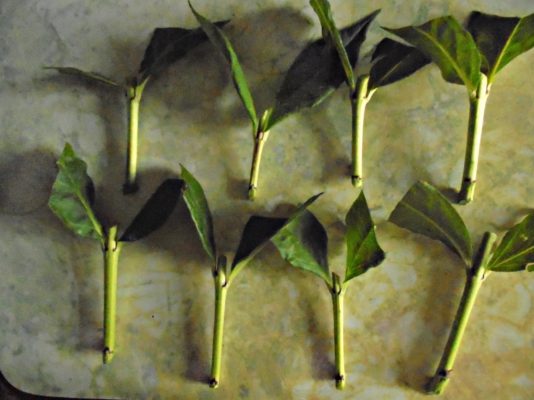

2-3 leaves are left on short cuttings of barberry
Correct cuttings of barberry
Correct grafting is done as follows:
- The top of the branch is cut horizontally.
- The lower cut at the shoot is made at an angle of 45 °.
- The leaves at the top node are cut in half.
- The leaves on the lower node are removed completely. The kidneys are not affected.
- Then the cuttings are placed in a mixture of sand and peat (in a 1: 1 ratio) at an angle of 45 °.
- The distance between the cuttings should be at least 10 cm.
- The favorable air temperature in the room for rooting cuttings is 20–25 o C.
- To maintain the required soil moisture, watering should be carried out 2 times a day.
After rooting the cuttings, the seedlings are grown in a greenhouse for 2 years.
Choosing a landing site
Barberry loves bright sunlight. In the illuminated area, the foliage will be brighter, and in the shade it will lose its decorative effect. The landing site must be protected from drafts and strong winds.
The shrub does not tolerate high humidity. The groundwater level on the site should be located no higher than 2 m from the ground surface. If this is not possible, then a good drainage layer should be provided.
The soil is desirable with a neutral acidity level. If the soil is too acidic, then 350 g of slaked lime and 200 g of ash per plant are added to it. The best soil composition for planting barberry is garden soil, humus and sand in equal parts.
Reproduction of barberry by dividing the bush during transplantation
By dividing the bush, barberry is propagated in the spring.Before the buds swell, the bush is dug out. Carefully, so as not to damage the roots, they are divided into several parts. Then they are seated in holes or trenches. If there is no goal to get two bushes, then the plant, along with an earthen clod on the roots, is moved to a new place.
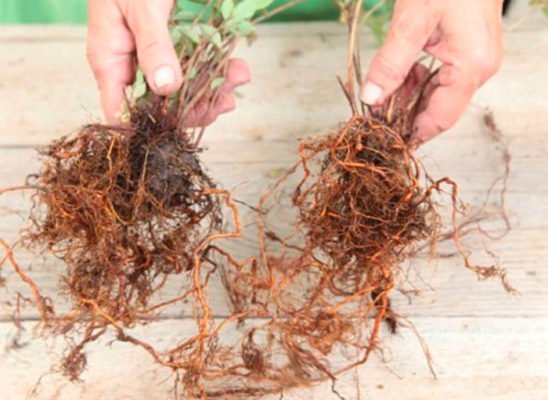

When transplanting, the barberry bush can be divided into two parts
Outcomes
For the successful cultivation of Ottawa barberry, you need to pay special attention to the following points of care:
- Choose a landing site according to the recommendations.
- Purchase healthy seedlings.
- Plant the seedlings according to the instructions.
- Timely watering, fertilizing, pruning, weeding, loosening and mulching.
- If diseases and pests are detected, take appropriate measures immediately.
- Cover young bushes for the winter.
Plants neighbors for barberry
Bright and colorful barberry will perfectly fit into the design of any garden. He can be assigned a separate flower bed. Annual and perennial flowers, conifers will become excellent neighbors for the shrub in the personal plot. Barberry also feels great in the neighborhood of thuja.
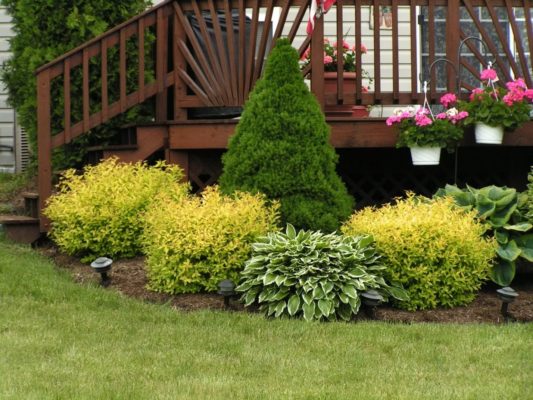

Barberry feels great next to deciduous and coniferous trees
The use of Ottawa barberry in landscape design
The shrub looks great as a hedge and can be trimmed and shaped to any desired shape. It is also good in single plantings, in the center of flower beds and lawns. Its bright foliage, fragrant flowers and red fruits are beautiful.
Often, barberry bushes decorate the edges of lawns and flower beds. It serves as a reliable protection against trampling flowers. Barberry is actively used in rockeries, Japanese gardens and alpine slides. Bright barberry bushes at the foot of large trees look great.
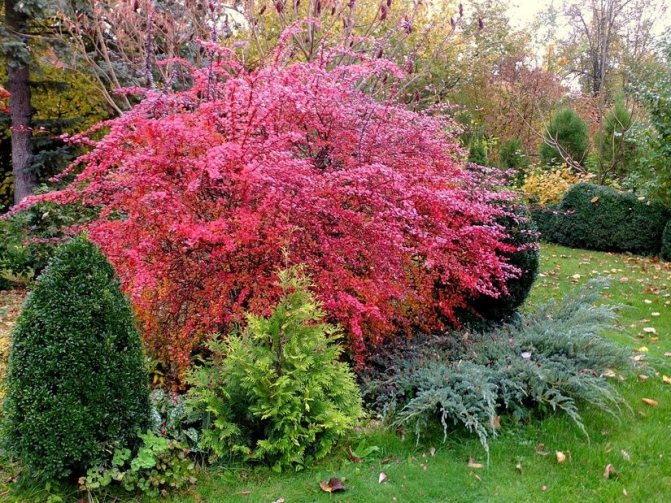

Landing features in the regions
There are no differences in planting barberry in different regions of the country. But the difference in climate affects the choice of the variety and the care of the plants.
Barberry in Siberia
Although barberry is a frost-resistant plant, some species are less suitable for cultivation in Siberia. These are the Thunberg barberry, Korean barberry, whole-edge barberry. You can opt for ordinary barberry, Amur barberry, oblong barberry. For the winter, it is recommended to cover the young bush - along the edges with a spruce forest, and then, when it snows, make a snowdrift. Large plants are tied with twine, a box is installed, where dry leaves are poured. From above, the structure is wrapped in a nonwoven material. The soil around the plant is mulched.
Barberry in the suburbs
In the climate of the Moscow region, the culture feels good. It is only important to provide the bushes with a lot of light and non-swampy soil. Common barberry, Thunberg barberry, Ottawa barberry are excellent for growing in the region.
Video: growing barberry Thunberg
Barberry is one of the most unpretentious shrubs growing in Russia. It is safe to say that with proper planting and proper care, it will take root in any garden plot, delighting with a good harvest and a colorful appearance from year to year.
Many owners of backyard gardens and summer cottages plant shrubs with high decorative properties. One of them is barberry. Planting and caring for this shrub is not particularly difficult. The article discusses how to properly plant the acquired plant, take care of it. Tips on breeding barberry and dealing with pests and diseases that affect it can also come in handy.
Recommendations for the choice of planting material
Barberry seedlings and seeds are sold in stores and nurseries. When choosing seeds, you need to check the expiration date and carefully inspect the packaging. It must be undamaged, indicating information about the manufacturer and his contact details, grade.
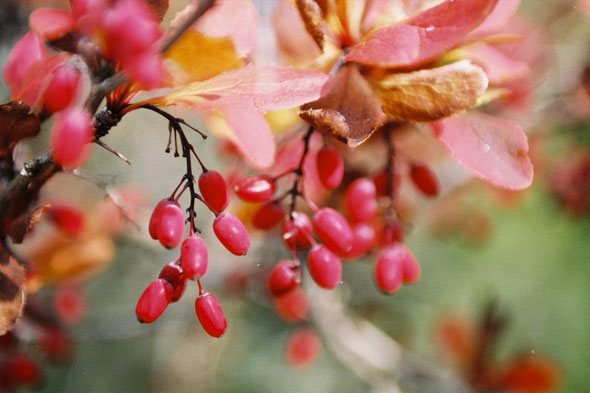

Seedlings should be selected no older than 2 years of age. The bark should be elastic, without dried out areas and twigs, without damage.The root system is developed, without dry and rotten processes.
One of the most popular is the Thunberg barberry. This ornamental shrub is great for hedges. The branches have numerous thorns and are closely spaced to each other. Common purple-leaved barberry is not inferior in popularity to Thunberg. This plant with a height of 2.5-3 m, in addition to aesthetic qualities, is undemanding and good frost resistance. Another interesting culture is the Amur barberry. It is able to withstand both low temperatures and extreme heat and drought.
Varieties and varieties of barberry
Barberry is a spectacular ornamental plant with elongated fruits of bright red, yellow or white color. It is an unpretentious, drought-resistant and frost-resistant shrub with elliptical leaves of the most varied colors: green, yellow, red, purple. The berries of the common barberry are edible and are widely used in cooking and medicine. They have a pleasant sour taste and are used for the preparation of compotes, jelly, preserves, marshmallows, syrups, etc.


Due to the presence of many useful substances - malic, tartaric and citric acids, carotenoids, vitamins, mineral salts, the fruits and leaves of the plant are used to make preparations:
- lowering blood pressure;
- having a bactericidal effect;
- preventing the development of lamblia in the human body;
- to stop bleeding;
- relieving fatigue;
- fight psoriasis.
Exists three main varieties of barberry, each of which has many varieties:
16 excellent varieties of plums for the Moscow region
- Common barberry, reaching 3 m in height. The most popular varieties are Atropurpurea, Alba-variegata, Aureo-marginata, Vymchaty, Krupnokolyuchkovy.
They also distinguish between types of barberry, which are similar in appearance to the common barberry:
- a hybrid of Provencal barberry, obtained as a result of crossing an ordinary and Siberian plant species;
- native to the Himalayas Spinous;
- barberries of Zimbold, James, Diels.
Species diversity of barberries
Many of us remember the very Barberry sweets, syrups and lemonades that were so popular during the Soviet era. All these products were made from the berries of edible barberry species. Now many gardeners grow this unpretentious plant on their site. However, not all species take root in our latitudes, but only those that have managed to adapt to the temperate climate.
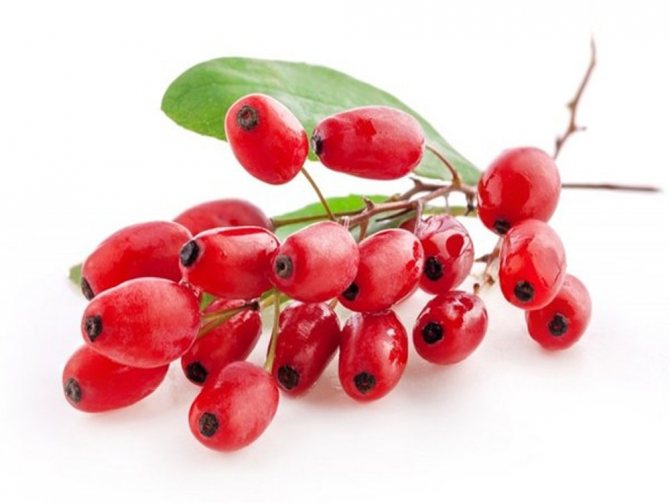

Bright berries of barberry are hard not to notice among the garden greenery
The genus of barberry includes many species, among which there are both evergreen and deciduous plants. A common feature of these shrubs is the presence of thorns - single, double, triple, and sometimes even five together. They are located at the base of the kidneys, they can be very hard or soft, almost invisible.
Barberry bushes bloom from late May to early July. Flowers are yellow, small. The berries are light or dark red, sometimes black, with a pronounced sour taste, but quite edible.
Barberry plantations look very decorative throughout the season. Deciduous species are a real gem of the autumn garden thanks to the vibrant color of the leaves and berries.


Barberry bushes decorate the garden throughout the season
Next, we will take a closer look at the most popular varieties of barberry.
Planting barberry
In order for the seedlings to develop well, bloom profusely and bear fruit, it is important to carefully consider the choice of a place for planting and preparation of the soil. For barberry, a soil with normal acidity is most suitable, if its pH is more than 7.0, it is recommended to add slaked lime before or during planting.
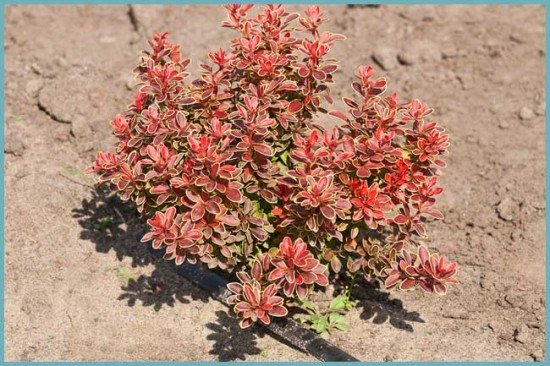

The optimal distance between the bushes for a single planting is 1.5 m, when creating a hedge - 0.5 m.Barberry does not tolerate stagnant water, therefore, it should be planted at the highest located places of the site and the soil should be drained by adding sand to improve aeration of the plant root system.
Attention! Despite its endurance and unpretentiousness, the barberry is photophilous, when planted in the shade, the bright shades of the color of its leaves fade, decorative elements on the leaves, for which this plant is especially valued: spots, stripes and other patterns, may disappear.
Landing order:
- A landing pit with sides of 40 x 40 x 40 cm is being prepared.
- A small layer of sand is laid at the bottom of the pit, then a mixture of turf soil with 8-10 kg of humus or compost. If organic fertilizers are not available, mineral fertilizers can be used instead (200 g of superphosphate and 100 g of potassium sulfate). At a high pH of the soil (high acidity), 400 g of lime or 200 g of wood ash is added to it.
- The plant is placed in a pit, the free space is filled with a prepared earthen mixture, watered abundantly, the surface is mulched with peat or compost. The root collar of the bush should be at the level of the ground surface.
- The top of the plant is cut off, leaving 3-5 strong buds in the lower part.
Testimonials
What can be used to make a hedge in the country - so that it grows well and densely, does not get sick, and has a decorative look? Barberry bushes are very suitable for this. I have two types of this plant on my site - an ordinary barberry with green leaves, yellow flowers and a funky aroma. The flowers are small, collected in inflorescences A very prickly plant - pruning must be done with gloves and after pruning it is advisable to collect all the branches that have flown off - otherwise you can rip up your leg. The bush can be trimmed to give it a beautiful shape. In our country, he "strives" for the shape of a chicken, however, we rarely cut him off and it is difficult to understand what he is. If the bush is not cut, then it looks like a ball. It grows fast enough, it grows more than 2 meters. Not susceptible to attack by harmful insects. And the second barberry - the Thunberg barberry - is very similar in properties to its previous brother, but differs only in red foliage. It also blooms with yellow fragrant flowers. Its height is slightly less than that of green barberry - about 1.8 meters. It can also be cut and shaped. It looks very beautiful against the background of other plants, in any case you can't walk past it. In autumn, it is beautifully combined with a woodworm (large yellow liana). So that weeds do not grow under it (after all, it is very unpleasant to weed under it - no matter how hard you try, it will certainly prick you with its thorns), we mulched the space under them with expanded clay on black spunbond and put our ceramic friends from Hungary there. Barberries have fruits - berries, but they are very small - a solid bone and skin, so we leave all the berries on the bushes. And also barberries are medicinal plants, the range of their application is very wide - from roots to leaves, everything goes to folk medicine. The only thing is that green fruits are poisonous. In principle, a good plant for a hedge - it grows quickly, is undemanding to soil and maintenance, and getting through such a plant is a big problem - you will definitely hurt not only the skin, but also clothes.
svetikrys1709
Walking with a child, I draw attention to interesting plants and shrubs growing on our way. Most of them can be found in the park. As, for example, the common barberry shrub. A couple of years ago, it attracted attention by the fact that in the middle of winter there were many tiny red oblong berries hanging on it. Everyone knows that barberry provides valuable medicinal raw materials (leaves, fruits, bark, roots). A properly prepared medicine from them will help in the fight against many diseases. I will not describe them and advise something, the doctor should do it.The only thing I want to warn you: green berries are poisonous! But ripe ones can be used in cooking, they have a lot of useful substances! Since this is an almost wild plant, the care is minimal - pruning.
Zerkana
Barberry has many types and varieties, each of which is unique in its own way. Due to its unpretentiousness, it is very popular among gardeners. Certain types of barberry are able to withstand temperatures down to -40 degrees. The shrub is widely used in landscaping areas, parks and residential areas.
Seedling care
The main operations of caring for barberry bushes are:
Flower bed design. TOP 10 simple and effective techniques
- loosening the soil, facilitating the access of oxygen to the roots of the plant;
- watering in dry weather, weeding with the removal of weeds;
- pruning weak and diseased branches, forming a bush;
- top dressing.
In the first 2 years after planting, the seedling should be covered with sacking for the winter to protect it from the cold. Adult bushes can easily tolerate freezing temperatures. If the winter is harsh and frosts damage the branches, they are pruned at the onset of spring to healthy buds.


Barberry is a fast growing shrub that is recommended to be pruned regularly in spring or fall. This will allow not only to remove the skeletal branches located in the central part of the bush, leading to its excessive thickening, but also to give a beautiful decorative shape with the help of a haircut. The first pruning is done a year after planting, removing half or two-thirds of the growth of the branch. The best times to trim the barberry hedge are June and August.
Fast growing barberries
The fastest growing varieties of barberry also belong to the Thunberg species. They have a number of distinctive features:
- An adult plant can grow up to three meters in height.
- The branches and trunk of shrubs are covered with thorns up to 1 cm long.
- The leaves are small, oblong, 1–3 cm long. The foliage is colored red in autumn and falls off in the winter.
- Flowering lasts from one to two weeks. Flowers have a yellow center, their outer side is red.
- They bear fruit annually and are very abundant. The berries reach 10 mm in length and are elliptical in shape.
- Ripe fruits of bright coral color appear on the bush in mid-autumn and hang on the branches for a long time.
Photo gallery: the fastest growing varieties of Thunberg barberry
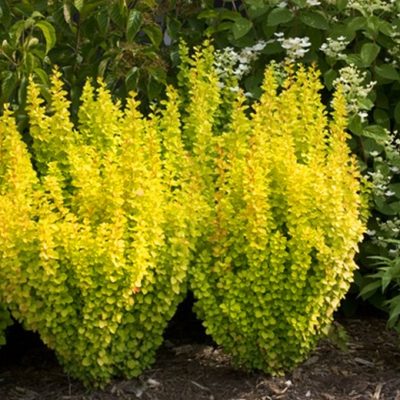

Barberry Thunberg Maria is a bright light green shrub with a vertical habit


The brown-red Thunberg Red Chief barberry can grow up to 4 meters high
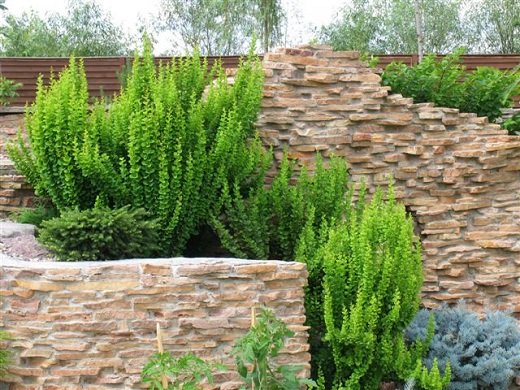

The barberry bush Erecta has an unusual columnar shape
Fertilizing and feeding barberry bushes
Barberry does not need too frequent feeding. The first feeding of the plant is carried out a year after planting, then every 3-4 years. In the spring, nitrogen fertilizers are applied (20-30 g of urea dissolves in 10 liters of water per 1 bush), in the fall - phosphorus, potassium (15 g of superphosphate, 10 g of potassium salt per plant), organic fertilizers. It is good to combine these drugs with trace elements.
In July, plants can be fertilized with a complex preparation Kemira-universal at a concentration of 15 g per 10 liters. Nitrogen fertilizers - ammonium nitrate, urea contribute to powerful growth, the formation of leaves and stems of seedlings, potash and phosphoric fertilizers provide abundant flowering and fruiting of bushes.


Care
Taking care of Ottawa barberry is quite simple. It is necessary to follow simple agrotechnical rules, and then the shrub will delight you with beautiful foliage, fragrant flowers and bright fruits all season.
Watering
In a drought and after dressing, the barberry is watered. One bush requires 5-10 liters of water. 2 weeks before the onset of frost, water-charging irrigation is performed.
Each time after watering, the soil of the root zone is freed from weeds, loosened and mulched.
Top dressing
The first feeding is done in the spring, but only a year after planting.Dilute 30 g of urea in 10 liters of water, and pour this amount under one bush. This feeding is done once every 4 years.
Before flowering, the barberry bush is fed with organic matter. To do this, 1 kg of rotted manure must be diluted in 3 liters of water, after which the solution should be infused for 3 days. Take 1 liter of the resulting infusion, dilute it in 3 liters of water, then pour the solution under the bush.
Before the onset of winter, 15 g of superphosphate and 10 g of sodium sulfate are introduced into the near-trunk zone of each bush.
Pruning
To maintain the beautiful shape of the barberry bush and to stimulate the growth of new shoots, annual pruning is performed.
In the fall, sanitary pruning is done to thin out and remove broken, dried, damaged and improperly growing shoots. It is carried out when 2 weeks remain before the onset of frost. All garbage is immediately burned.
If the barberry shrub is planted as a hedge or any figures, then they produce a regular haircut immediately after flowering. In this case, the crown will form for 3-4 years, and the bush will not bloom. Barberry perfectly tolerates various haircuts, they only benefit him.
Reproduction
- Seeds. This breeding method is used very rarely, since it is long and laborious.
- Cuttings. Cuttings are harvested in mid-June in the early morning hours. Cuttings are rooted in the usual way.
- Layers. In the springtime, the lower shoot is bent down and buried in, over time it takes root, after which it is separated and transplanted to the chosen place.
- Division of the bush. In early spring, a large overgrown bush is dug up and divided into several parts. Each part is planted separately.


Diseases and pests
Ottawa barberry has good resistance to diseases and pests. But in the presence of an epidemic or in case of errors in care, damage to such fungal diseases as powdery mildew and rust can occur. All aerial parts of the plant are infected:
- With rust, the leaves swell, a powdery coating of a dark color forms on them.
- Powdery mildew forms a white bloom, which over time turns into small drops of liquid.
To combat these diseases, fungicides are used - copper sulfate, colloidal sulfur, Bordeaux liquid and others. In case of severe damage, parts of the plant are subject to destruction.
From harmful insects, barberry can attack aphids and moths. The activity of their larvae disrupts the decorative effect of the shrub.
In mild cases, the plant is washed with a solution of soap and ash. For prophylaxis, shrubs are sprayed with a urea solution in the fall (500 g of urea per 10 liters of water). In severe cases, insecticides are used - Karbofos, Actellik, Conifor and others.
Wintering
Young plants in the first two seasons of life must be covered for the winter. Two weeks before the onset of frost, water-charging irrigation is carried out, and then the root zone is mulched with a thick layer of mulch, about 10 cm. The branches of the plant are wrapped with covering material, wrapped with rope, and insulated on top with spruce branches. When snow falls, it is additionally thrown onto the shelter.
Reproduction of barberry
When propagation of barberry seeds, they are separated from the bone, kept for 3-5 minutes in a weak solution of potassium permanganate. The dried seeds are buried in the ground by 1-2 cm, with the arrival of spring, the seedlings are thinned out, leaving a distance of 3 cm or more between them. After 2 years, the seedlings can be transplanted to another place. When sowing seeds in spring, they must first be stratified: mixed with sand and placed in the refrigerator for 2-5 months. The stratification temperature should be between 2-5 ºC. In order for the plants to bear fruit in a few years, several specimens must be placed nearby, since this is a cross-pollinated shrub.
Cuttings produced in the morning in the middle of July.Preparation of cuttings consists in removing the lower leaves, shortening the upper leaves by 2 times and placing them for 3-5 hours in an aqueous solution of heteroauxin or other root-forming agent. After washing with water, the cuttings are planted in a greenhouse. The soil should consist of equal parts of sod land, humus and peat, to which a small amount of sand is added. Within two weeks, the greenhouse is regularly ventilated and the soil is moistened, and when the cuttings are completely rooted, the film is removed.
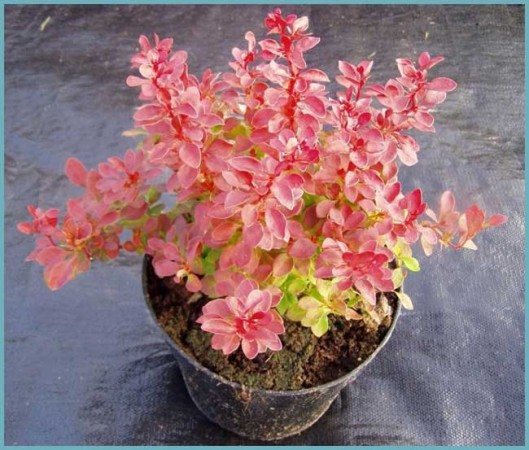

For breeding barberry layering in the spring, a powerful annual shoot is selected in the lower part of the bush, bends down, fits and fixes in a small groove, which is covered with earth in such a way that only the upper part of the branch peeps out from under the ground. By the end of the season, the cuttings will be able to take root, they are separated from the bush and transplanted.
Breeding methods in the Moscow region
There are several methods, and all of them are successfully applied in the middle lane:
Seeds
The best ripe fruits are selected for seed material. The bones are removed and dried. Processing with a weak solution of potassium permanganate will be beneficial.
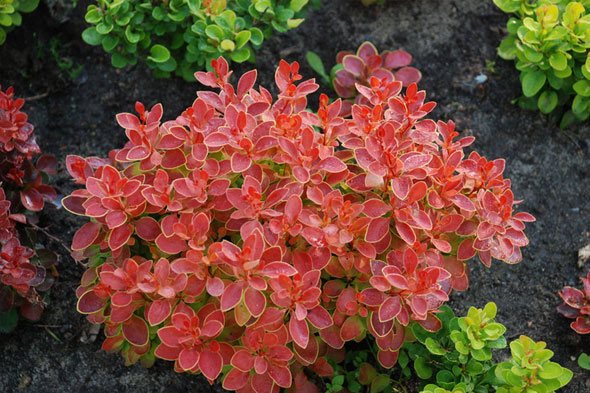

The most suitable season for sowing is considered autumn before the onset of cold snaps. In spring, it can also be planted, but the process turns out to be more laborious, since within 2-4 months the seeds are stratified at a temperature of + 2 ... + 5 ° C. The duration of the process depends on the variety.
Reference. Common barberry is stratified - 2 months, Thunberg barberry - 3 months, Amur - 3.5 months.
The seedlings have leaves, which means it's time to order them. The gaps are left 3 cm in size. Within 2 years, the plants are grown without transplanting.
Cuttings
Plants inherit all parental qualities when using this method. Young individuals no more than 10 years old are chosen for propagation. In the morning, until the dew has dried, the shoots are cut. They are placed in water in a shaded place and cut into cuttings with a sharp tool. It is cut obliquely under the kidney and placed in water with a lower cut.
The soil in the greenhouse is prepared in advance. The site is covered with a mixture of rotted leaves, earth and compost and covered with sand. The height of the first layer is 10-15 cm, the second - 4 cm. The soil is compacted and well watered.
Cuttings are planted obliquely, placing the bottom cut to a depth of no more than 1.5 cm. Recommended spacing between cuttings - 5 cm, between rows - 7 cm. After planting, watered with water heated to 20-25 ° C, by sprinkling. Then the greenhouse is carefully covered to maintain a temperature of 20-25 ° C. The cuttings are sprayed several times every day. The rooting period is about a month. Then the plants begin to harden. After winter, barberry is transplanted into open ground.
Layers
For reproduction, several young branches are chosen from one plant, no more than 1 year old. They are placed in holes 20 cm deep and watered during the summer season. By the fall, the shoots develop their own root system. They are cut off from an adult bush and dug up.
By dividing the bush
The division of the bushes is done in early spring or autumn. First, the shoots are cut off, then the barberry is dug up and cut into slices in the place where the root collar is. It is necessary to make sure that each part has roots and 2-3 shoots.
Self-seeding
The method consists in creating favorable conditions for the germination of fallen seeds and the development of seedlings. The recipe is simple - the soil should be regularly processed: fertilize, loosen, remove weeds and monitor moisture. In the spring the seeds sprout, in the fall the seedlings can be transplanted to a new place.
Diseases and pests affecting barberry
The most dangerous insects for barberry are the flower moth, aphid and sawfly. Signs of plant damage by aphids are drying out and wrinkling of the leaves. The pest can be eliminated by spraying the bushes with soapy water (300 g of laundry soap is taken for 10 liters of water). Other pests can be eliminated with a 1-3% chlorophos solution.
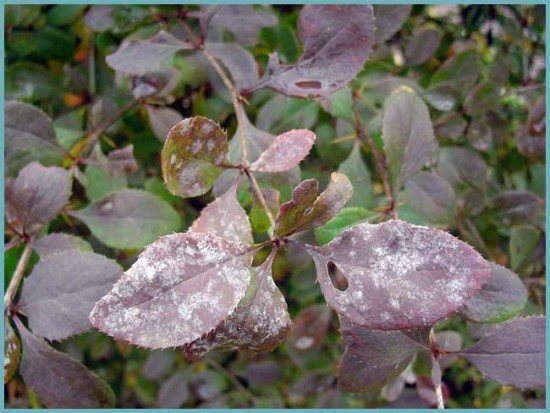

Also, barberry can be affected by fungal diseases, for example, powdery mildew, as seen in the photo, leaf spot, rust and other diseases. To destroy the pathogens of powdery mildew, the bush must be treated with 1% solution of colloidal sulfur, cut off diseased branches and burned. If a plant is damaged by rust, it should be treated three times with 1% solution of Bordeaux liquid or colloidal sulfur once a week. In case of spot disease, copper oxychloride (30-40 g per 10 l of water) is used twice before blooming and at the end of flowering. Plants affected by wilting caused by fungi are treated with copper oxychloride or Bordeaux liquid. When bacteriosis occurs, manifested by cracks and tumors on the stems, it is necessary to cut off the diseased shoot, capturing the healthy part of the plant and burn it, and spray the bush with Bordeaux liquid or its analogue.


Having planted a barberry on your garden plot, you can get great pleasure from the amazing beauty of this plant, create beautiful compositions using its branches, densely strewn with fruits, and also use berries to prepare many dishes and medicinal tinctures.
Barberry for the garden: video
Reproduction
For reproduction of Ottawa barberry, all vegetative methods are used, as well as seeds. Reproduction by cuttings and layering is used more often.
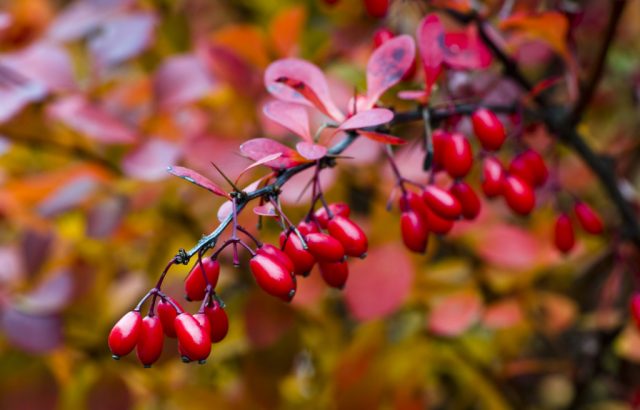

In the northern regions of Russia, sowing with seeds is best done in the spring. In a warmer area, you can sow seeds in the ground in spring and autumn. To do this, proceed as follows:
- Ripe fruits are harvested in autumn.
- Wring out, washed and dried.
- They are planted in prepared soil, deepening by 1/3 of a finger.
- Cover with foil until it snows.
For spring sowing, preliminary stratification is carried out for 3 months at a temperature of about + 50C.
Reproduction by green cuttings is carried out in the summer. For this, young branches of the current year are used in plants of 3-5 years of age.
What conditions does the plant require?
When growing barberry in the country, one should take into account both the climatic and weather conditions in which it will grow, and know its main characteristics, namely the requirement for lighting, fertility and acidity, the need for moisture.


Optimal climatic conditions
Suitable areas for cultivation are regions with a mild climate. Barberry belongs to unpretentious plants. With proper planting and care, it perfectly tolerates both winter cold and summer heat, it can take root even on poor soil.
Illumination of the site
All types of barberry are photophilous, they feel great in partial shade, although the foliage under such conditions will not have a beautiful purple color. Also, shading negatively affects the yield and taste of the fruits of the crop.
Suitable soil composition
Barberry loves neutral soil. The soil mixture should contain sand, humus, garden soil. Medium acid soil is suitable for barberry. In the presence of soil with a high level of acidity (more than 7.0 pH), it is necessary to add slaked lime to the soil before and after planting.
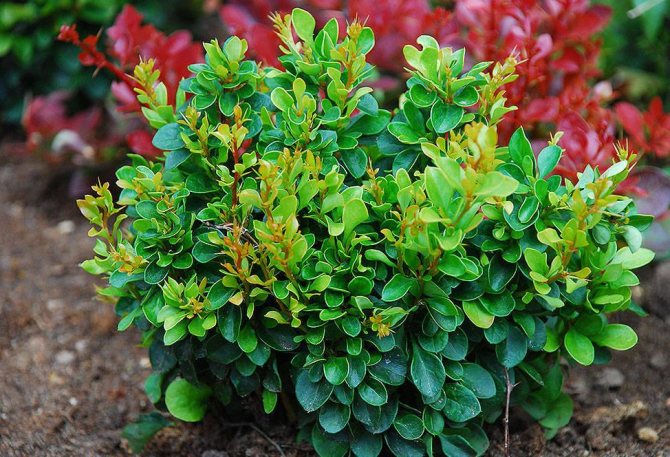

It is important to take into account that the close placement of groundwater can cause root rot.
Favorable and unwanted neighbors
Coniferous plantations are considered the best neighbors for barberry. Amazing compositions are obtained by combining different shrubs, garden flowers and dwarf trees.
An unsuccessful solution would be to plant a barberry near fruit trees, namely apple trees, pears, plums.
These crops take all the nutrients from the soil, preventing the barberry bush from feeding on microelements. They also shade barberry, blocking its full development.
See also
How to grow soybeans in a garden in the open field, planting and care features, collection times and feeding
To read
Common barberry: what are its advantages?
The spines of common barberry reach several centimeters in length.Large yellow inflorescences (from 15 to 20 cm) have a brush-like shape and are distinguished by an intense honey aroma.
Popular varieties:
- Atropurpurea (Atropurpurea) - a plant up to 2.5 m in height with the highest winter hardiness. Has purple leaves, oblong scarlet fruits. For a year it grows by 25 cm, pleases with flowering for two weeks.
- Alba-variegata (Alba-variegata) differs from the previous variety in the appearance of the crown. The foliage of this variety has white longitudinal stripes and specks. It grows up to 1.5 m, does not like stagnant moisture, prefers sunny areas.


Alba variegata - Aureomarginata (Aureo-marginata) is a shrub up to 2 m in height, the leaves are framed with a golden border. When growing in a shady place, the yellow edging from the foliage disappears.
Common barberry is considered one of the best for creating a hedge. It reaches an optimal height of 3 m, tolerates winter cold well, maybe with green and purple foliage, and its thorns are more ferocious than that of hawthorn.
What do edible berries look like?
Suitable fruits grow on common and Amur varieties. These are tree-like plants up to 3 m in height. In garden conditions, varieties of an ordinary species are most often grown, the berries of which have hard grains. The stores usually sell crops without seeds inside.
In both cases, ordinary barberry is meant, only its seedless varieties are cultivated on an industrial scale. However, bony fruits are no worse than purchased ones in terms of taste.


Harvested in the fall. The best time is when the first frost has passed over the berries.
It is recommended to eat ripe fruits, green ones often cause indigestion. Delicious desserts are made from berries: marshmallow, bright jelly, compotes, jam. Dried collection is also suitable; seasonings for meat dishes, soups, marinades are prepared from it. The zealous housewives even use young leaves to add a slight sourness to soups and salads.
Gallery: barberry (25 photos)
Barberry as a houseplant
Dwarf varieties of Thunberg barberry are suitable for growing at home:
- Bagatelle,
- Erecta,
- Kobold,
- Natasha.
Since the species tolerates pruning well, the crown shape and plant height can be easily adjusted. Barberry in the apartment will give you no more trouble than any houseplant. Growing miniature trees as an art originated in Japan many centuries ago. This is a well-known bonsai. For this, coniferous and deciduous plants are used, which in nature may not be small. Barberry is ideal for making bonsai. He tolerates pruning well and is very flexible in creating such compositions.
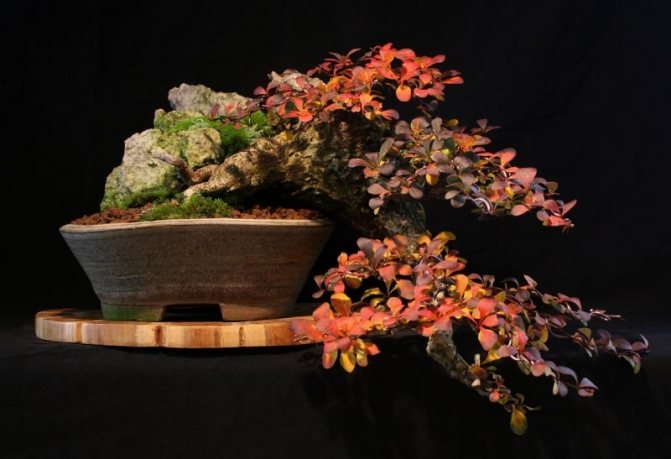

Barberry makes stunning miniatures
Features of home barberry care:
- Planting is done in a mixture of coarse sand, turf and compost (2: 2: 1). At the bottom of the pot, it is imperative to pour a layer of stones or expanded clay. When planting, the roots are slightly pruned and the shoots are shortened by 2/3.
- Water as needed. In the spring and summer, frequent irrigation has a beneficial effect on the plant, especially on hot days. In autumn and winter, the frequency of watering is reduced. Since the air in the apartment is very dry during the heating season, periodic spraying from a spray bottle is useful for the plant, but not during flowering.
- For feeding, use any organic fertilizers in the form of powder or granules (according to the instructions) once a month from May to September.
- When pruning, the cut site quickly becomes indistinguishable in color from the bark and does not require additional processing.
- Barberry can grow on a sunny window and in a shaded room, but so that variegated varieties do not lose brightness, the plant needs good lighting and additional lighting in winter.
- In summer, the plant will feel good on an open balcony.
- Diseases and pests in indoor barberry are the same as in nature, and the same drugs are used to combat them.
Dwarf barberry varieties can be grown in a container (for placement on terraces). Planting and caring for such a plant is no different from growing in a garden or in an apartment.
How to propagate barberry at home
Barberry Bagatelle - description, planting and care
Barberry propagates well by seeds and vegetatively.
Propagation by cuttings
Planting cuttings, layering is done in autumn or spring. Transplantation by cuttings is carried out after rooting them. Cold greenhouses are used for the rooting process.
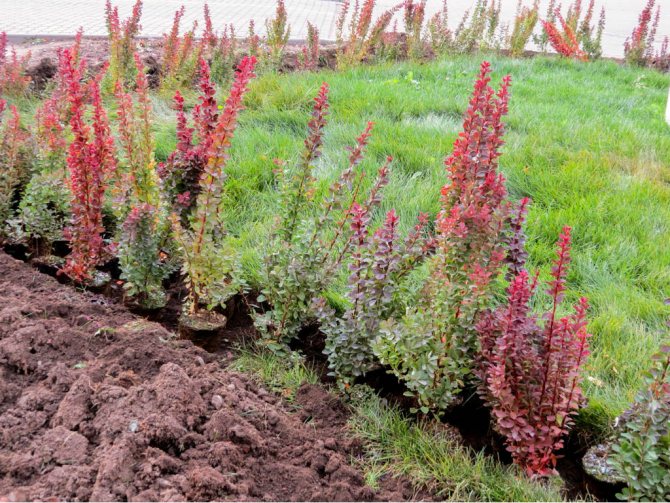

Reproduction by cuttings is practiced in autumn and spring.
Growing from seeds
For propagation by seeds, they resort to the method of artificial awakening (stratification) of seeds. Simulating winter conditions is achieved by covering the seeds with leaves and snow. In this case, the shell of the seed is soaked, it absorbs moisture and microelements. In this way, preparation for spring is going on, awakening and readiness for sowing begins. The seeds can be sown in the fall immediately after harvest.
Plants germinate in the first year after sowing. Growth at this time is slow, up to 10-15 cm per season, and later growth accelerates. Flowering and fruiting occurs only in the fourth - fifth year. Seedlings at the age of two are transplanted to a place of constant growth in pits, the size of which is 40x40x40 centimeters.
External characteristics and specific features
Depending on the variety, barberries can be deciduous or evergreen shrubs. The size, shape, shade of foliage and berries depend on the species. Currently, botanical reference books contain information about 500 species and varieties of barberries. About 112 of them have been induced on the territory of Russia, more than 50 species are found in the wild. The appearance of forest barberries is so diverse that it is sometimes difficult to guess what it is.
Benefits:
- high frost resistance (temperature minimum for some varieties is -45 ° C);
- endurance (resistance to gusts of wind, invasion of insects, most diseases);
- unpretentiousness to soils (grows on depleted, scarce and heavy soils);
- love of light (darkening negatively affects both the general development of the bush and the color of the crown, the size of the berries).
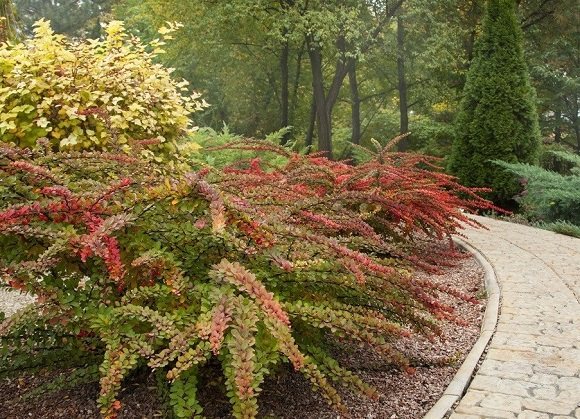

Thunberg varieties
Popular garden specimens are recognized:
- varieties derived from the Thunberg species;
- hybrids of the Common barberry;
- varieties of the Ottawa bush.
Instead of an afterword
The attention of gardeners is attracted not only by the decorative qualities of the plant, but also by its beneficial properties. Of course, bushes can be grown solely for the sake of decorating the garden, but do not forget about the beneficial properties of barberry. Beautiful fruits are not only a beautiful addition, but also a storehouse of vitamins and nutrients.
Tags: barberry, common, description, full
About
«Previous post
Classification
Taxonomy
The species Common barberry is a member of the genus Berberis of the tribe Berberideae of the subfamily Berberidoideae of the Berberidaceae family of the order Ranunculales.
Representatives
Within a species, there are a number of forms [10]:
- Berberis vulgaris f. atropurpurea Regel - with dark red-purple sepals. The most common form;
- Berberis vulgaris f. marginata Regel - leaves with a white border around the edge;
- Berberis vulgaris f. aureo-marginata Regel - leaves are golden-red. A rare form;
- Berberis vulgaris f. macrophylla hort. - the leaves are large;
- Berberis vulgaris f. macrocarpa hort. - the fruits are larger, rounded;
- Berberis vulgaris f. rotundifolia hort. - leaves are rounded;
- Berberis vulgaris f. serrata C.K. Schneid. - leaves are deeply toothed;
- Berberis vulgaris f. arborea hort. - trunk branching at the top;
- Berberis vulgaris f. lutea Regel - bright yellow fruits;
- Berberis vulgaris f. alba West. - fruits are white or yellow;
- Berberis vulgaris f. enuclea West. - fruits without seeds;
- Berberis vulgaris f. dulcis Loud. - fruits are slightly sour, sweetish;
- Berberis vulgaris f. sulcata K. Koch - highly ribbed shoots.
Taxonomy
The species Common barberry is a member of the genus Berberis of the tribe Berberideae of the subfamily Berberidoideae of the Berberidaceae family of the order Ranunculales.
Representatives
Within a species, there are a number of forms [8]:
- Berberis vulgarisf. atropurpurea Regel - with dark red-purple sepals. The most common form;
- Berberis vulgarisf. marginataRegel - leaves with a white border around the edge;
- Berberis vulgarisf. aureo-marginataRegel - leaves are golden red. A rare form;
- Berberis vulgarisf. macrophyllahort. - the leaves are large;
- Berberis vulgarisf. macrocarpahort. - the fruits are larger, rounded;
- Berberis vulgarisf. rotundifolia short. - leaves are rounded;
- Berberis vulgarisf. serrata C. K. Schneid. - leaves are deeply toothed;
- Berberis vulgarisf. arboreahort. - trunk branching at the top;
- Berberis vulgarisf. luteaRegel - bright yellow fruits;
- Berberis vulgarisf. albaWest. - fruits are white or yellow;
- Berberis vulgarisf. enucleaWest. - fruits without seeds;
- Berberis vulgarisf. dulcisLoud. - fruits are slightly sour, sweetish;
- Berberis vulgarisf. sulcataK.Koch - highly ribbed shoots.
Shrub planting options
In private or suburban areas, the barberry shrub is used as a specimen composition or living wall.
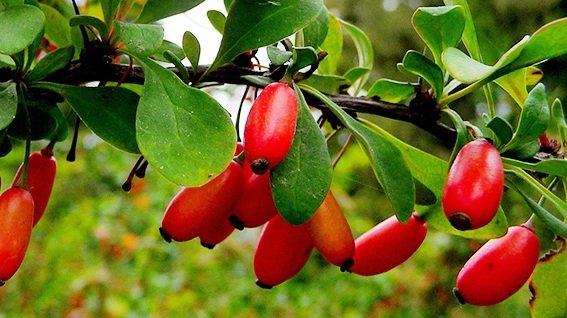

How to plant a single plant?
A store-bought seedling usually has an earthen clod with prolonged additives. An ordinary barberry or another variety is transplanted into open soil according to the following scheme:
- Dig a hole, retreating 2-3 m from other rocks. The depression should be larger than the earthen lump.
- Prepare a soil mixture based on sod, humus and peat in a ratio of 2: 1: 1.
- The seedling is watered in a container and carefully removed.
- The bush is placed in a hole, covered with earth. It is not necessary to deepen the growth limit, since there are risks of lack of fruiting and rotting of the variety.
- The soil is rammed, filled up and watered with a bucket of water.
Before starting planting, you need to inspect the root system and remove rotten parts as much as possible. It is imperative to dust the places of the cuts with crushed activated carbon. If the shrub grows in a hot and dry climate, it is required to organize a shelter before the survival period.
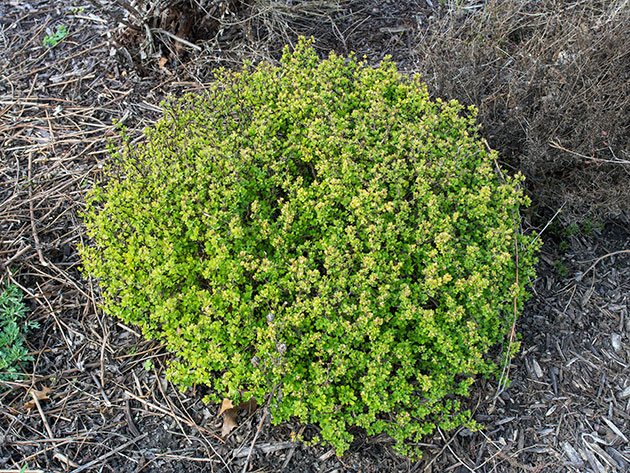

Hedge decoration
Barberry in the country is used as a decorative and protective planting. The dense, growing crown that characterizes the common barberry and demonstrates its description is suitable for a molded hedge that creates a calm and intimate effect. To create a green wall, choose cuttings with good rooting that have reached the age of 2 years, or seedlings grown from seeds. The design of the composition is carried out as follows:
- Choose the height of the natural fence. Common barberry creates a beautiful dull framing of the site.
- Cuttings or seedlings are planted in the ground in September or March in a sunny place.
- For planting, grooves of 60 cm are made, top dressing is laid and only healthy shoots are placed in them without damaging the branches and roots.
- In order for the shrub to grow freely, holes are dug in a checkerboard pattern, keeping a distance of 50 cm.
- A seedling buried in a hole is watered and tamped.
The shape that the growing barberry assemblage has depends on its haircut. A rectangular composition is made with a bare trunk; a 10-degree bevel is provided for a trapezoidal one. A triangular fence implies a 70-degree slope, and only experienced gardeners can create rounded shapes.
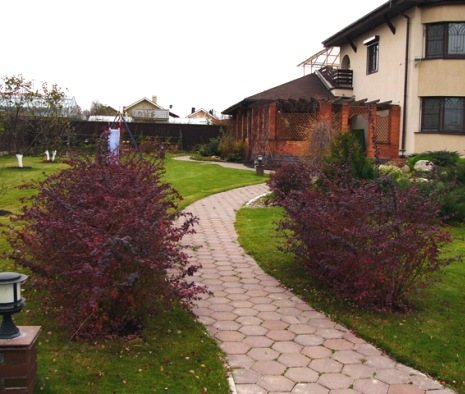

Barberry - useful properties
Long before our era, barberry berries were used as an effective remedy for rejuvenation, blood purification, and treatment of many diseases. This is mentioned on clay tablets made by the ancient Assyrians.
Now the enormous value of barberry has been scientifically proven. The set of useful substances contained in it is able to remove toxins, cleanse the body, slow down the aging process, restore damaged cells, cope with inflammatory processes in the body, prevent cardiovascular diseases, and resist atherosclerosis.
And this is just a small list of the healing advantages of the "caramel tree", which can not only give us health, but also bring a piece of beauty, harmony and charm into our lives.
Shrub pruning
Barberry Ottawa belongs to ornamental deciduous shrubs, which require annual pruning to maintain their beauty. This is done to stimulate the active growth of young shoots, which are distinguished by leaves of maximum decorativeness.... The second purpose of pruning is sanitary, it is needed to remove unnecessary load from the shrub, to prevent the development of diseases and damage by pests.
Sanitary pruning is carried out in autumn... The procedure is carried out when the shrub begins to enter a dormant state, at least 2 weeks before the first frost. Depending on the regional climate, pruning times may start at the end of September and last until the end of November.
It includes the removal:
- old and withered branches;
- areas affected by pests or rot;
- unnaturally intertwining branches;
- shoots growing inside the crown.
Slices are made only along the annular influx or above the kidney with sharp and disinfected garden shears. Large wounds should be treated with garden varnish. After the procedure, all plant debris, mummified fruits and fallen leaves are disposed of.
Barberry Ottawa perfectly forms the crown in a natural way. This is facilitated by thin branches growing vertically upward at an acute angle. Therefore, with single plantings, you can only do with sanitary pruning.


Trimming scheme and hedge trimming
Plants intended to form hedges will need to be trimmed regularly. In the second year after planting, the shoots of barberry are shortened by 1/3 or 1/2... This will stimulate tillering of the plants. The flowering of barberry occurs on the growths of the last year. Therefore, so that the shoots with flower buds have time to grow, the procedure is carried out immediately after the flowering of the shrub.
In the same way, the barberry continues to be cut in subsequent years, until the crowns of neighboring shrubs close. After that, the lateral and upper growths are shortened twice a season. This forms the flat edges of the hedge with a thicker bottom.
The pliability of the Ottawa barberry to a haircut allows you to embody many of the fantasies of landscape designers. The bush can be shaped like a ball, triangle and complex multi-tiered shape. At the same time, it is important to know during the formation of the crown 3-4 years, in connection with regular pruning, you will have to forget about the flowering of the shrub.
Meaning and application
It is widely cultivated in gardens and summer cottages. It is notable for its beautiful rounded crown shape, massive flowering for almost three weeks. Especially decorative in autumn, in fruits. Suitable for creating difficult-to-pass hedges, including mowed ones.
A valuable food plant. Ripe fruits are eaten. Dried ground or crushed barberry fruits - mistakenly called sumac - are used as a seasoning for meat dishes and bean soups [4]. For industrial processing, mainly seedless berries (Berberis vulgarisvar.asperma) are used. Young leaves are used instead of sorrel in green cabbage soup.
The berries give a good dye for dyeing leather and wool in a lemon yellow color.
Hard wood, with a wide bright yellow sapwood, is used for making boot nails and for turning products.
Honey plant. Barberry honey has a golden yellow color, pleasant aroma and delicate sweet taste [5].
It has been known as a medicinal plant since ancient times, in Ancient Babylon and Ancient India [6].
All parts of the plant contain isoquinoline alkaloids, the main of which is berberine, and the leaves contain vitamins C, E, carotenoids, organic acids [7] (apple, citric, tartaric), mineral salts, and essential oil during the fruiting period [6].
Medicinal raw materials are the leaf (Latin Folium Berberidis) and the root (Radix Berberidis) of the common barberry. Leaves are harvested during budding and flowering; roots - in early spring before bud break or in autumn after fruit ripening [7].
Tincture of barberry leaves has a hemostatic (increases blood clotting) and choleretic effect. Barberry preparations stimulate muscle contraction, constrict the vessels of individual organs, cause a decrease in the tone of the gallbladder, have an analgesic and anti-inflammatory effect.
In folk medicine and homeopathy, barberry is used as a hemostatic agent, as well as for diseases of the kidneys, liver, urinary tract, and also as a diaphoretic. The extract from the leaves of barberry is known as a hemostatic agent for female diseases [6].
It is widely cultivated in gardens and summer cottages. It is notable for its beautiful rounded crown shape, massive flowering for almost three weeks. Especially decorative in autumn, in fruits. Suitable for the creation of difficult to pass hedges, including mowed ones.
A valuable food plant. Ripe fruits are eaten. Dried ground or crushed barberry fruits - mistakenly called sumac - are used as a seasoning for meat dishes and bean soups [4]. For industrial processing, mainly seedless berries (Berberis vulgaris var. Asperma) are used. Young leaves are used instead of sorrel in green cabbage soup. Known barberry liqueur [5].
We suggest that you familiarize yourself with: How to cover hybrid tea roses for the winter
Ripe fruits with alum paint pink wool, linen and paper, roots - yellow wool and skin [5].
Hard wood, with a wide bright yellow sapwood, is used for making boot nails and for turning products.
Honey plant. Barberry honey has a golden yellow color, pleasant aroma and delicate sweet taste [6].
Cooking use
Common barberry is known for its valuable nutritional qualities, due to which it is actively used in cooking. Ripe berries are good both fresh and dried. By the way, the young foliage of the plant is used for food. It is used in salads and soups. Barberry berries can be added to meat dishes. Juices, drinks, marmalade are prepared from the fruits, syrups, preserves, marshmallows and mousse are boiled. Berries can be pickled and pickled.
Barberry bushes are excellent honey plants. Barberry honey has a pleasant aroma and a delicate sweet taste. The nectar has a golden yellow color.
Features of soil preparation
Shrub barberry, if grown in a single composition, is planted in specially prepared soil. Gardening activities are carried out in stages:
- A hole is dug with a size of 45x45 cm and a depth of 50 cm;
- Fertilizer based on superphosphate is applied to the soil;
- Drainage is organized from wood, stones, which prevents stagnation of moisture in the root system.
- About 10 liters of water is poured into the bottom of the pit. The liquid should be completely absorbed.
- The pit space is filled with a mixture of peat, rotten leaves or compost and fertile soil. Ash is added as needed.
Preparing the pit will accelerate the growth of culture, protect it during the winter cold.
Barberry - let's get to know each other
The barberry family unites several hundred species of trees and shrubs. Deciduous and evergreen forms are known. In the wild, this plant is found on almost all continents.
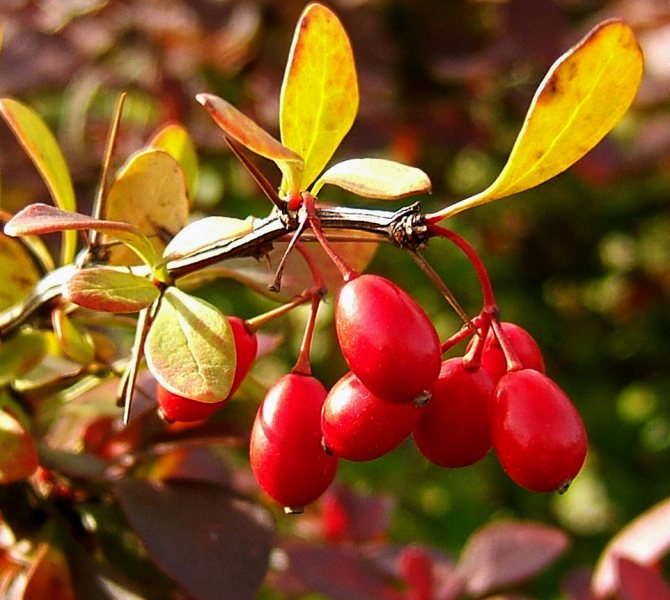

Barberry is found on almost all continents
Prefers a warm climate, but can tolerate moderate frosts. In extreme cold it requires shelter. The plant is prickly, the fruits are small, edible. In culture, common barberry or Thunberg barberry is grown, less often Amur, Canadian (Ottawa) and Korean.
The large decorativeness of the plant is popular in landscape design and is widely used. This is facilitated by a huge selection - from dwarf forms (30 cm) to giants (3 m), with a spherical, columnar and spreading crown. Barberry gets along well with various plants and does not seek to seize territory, since it does not have root growth. Drought tolerant, shade tolerant, unpretentious.
There is a small drawback - thorns. But it can be made a virtue: a barberry hedge will become an insurmountable obstacle for uninvited guests and a beautiful framing of your site.
The maximum decorative effect of the plant is at the age of 7–8 years. It can live for 50 years, with good care it bears fruit up to 35–40 years. Blooms in May, about 3 weeks. Good honey plant.
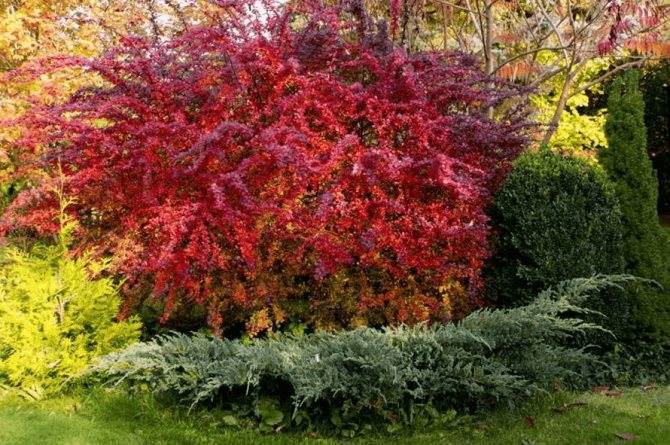

Barberry looks spectacular in joint plantings
Dates of disembarkation of barberry
The primary planting is carried out in early spring, or during the period of active leaf fall. It is easiest to grow seedlings from seeds in the fall, and it is better to postpone cuttings, branches and division of the bush until April or May. In southern regions with a long summer, seedlings are transplanted into the ground in early April, in the Moscow region - in the second decade of the same month.
In Siberia, the planting material is moved to a permanent place no earlier than May, since the earth will not have time to warm up before this time. In autumn, in the northern regions, barberries are planted in the ground in the second decade of September, in the central regions - in the third decade of September, in the Moscow region and southern regions - in October.
The origin and appearance of the plant
Barberry grows in Asia, its central and eastern regions, as well as in the southern part of America. On the territory of Russia, the Amur genus, Siberian and ordinary, are cultivated. The names correspond to the geographical area of growth. Amur barberry is grown in the Far East, Siberian barberry - Altai, Sayan, ordinary - European space. Nature has presented to mankind 170 species of this wonderful evergreen, deciduous and half evergreen shrub with thorns.
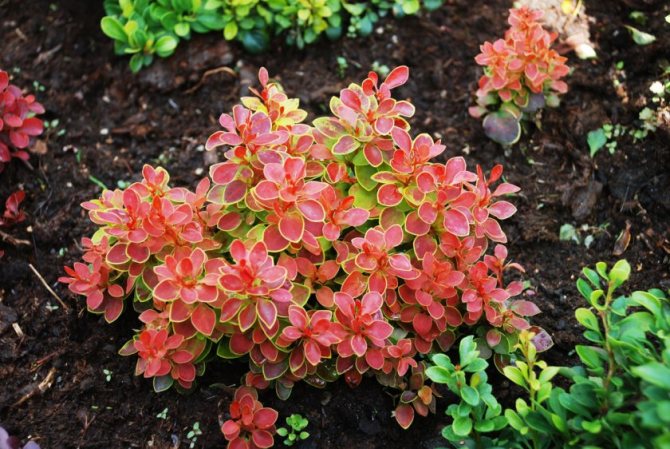

Spectacular decoration of the yard
Short stalks develop in the peculiar sinuses of these very thorns. The leaves resemble bunches in structure. Young stems are covered with leaf blades in a spiral manner. Considering the decorative properties of the barberry, the plant is used in landscaping, the design of the urban landscape in the form of a hedge.
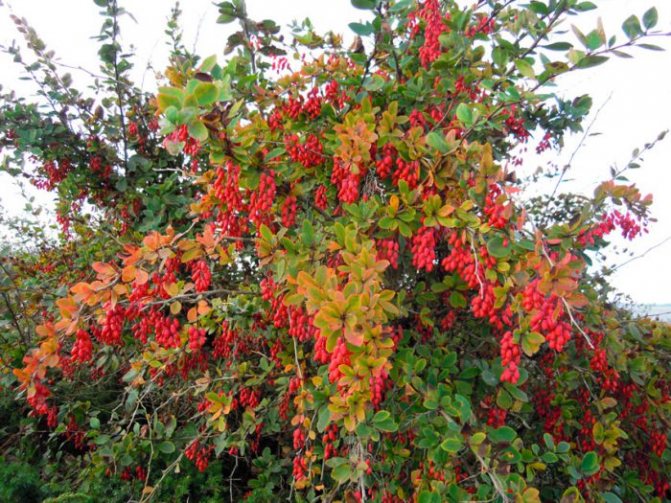

Barberry berries are edible
Plant flower description
During flowering, the bushes are covered with small yellow, orange flowers. Against the background of this color, red blotches are visible. Flowers are collected in inflorescences that resemble brushes or shields. Small flowers are excellent honey plants with a fragrant aroma. Each petal contains a pair of nectaries. The time of flowering bushes is associated with the time when bees extract honey.
Description and characteristics
Barberry belongs to the genus Berberis shrubs and to the Barberry family. The specific features of the culture differ in the color of the foliage, the shape and size of the plant.
Bush
Barberry is a thorny, branchy, tree-like shrub that grows up to 2 m in height, has powerful roots and simple, sometimes leathery foliage 3-4 cm long, collected in bunches, alternately placed on flexible stems. They are ovoid or elliptical in shape.
The value of the plant is that the color of the leaves can be different: light and dark green, purple, reddish brown, purple, yellow. The bark is light brown on the outside, dark yellow on the inside. The shoots of the plant are erect, yellowish, with time they acquire a whitish-gray color. Shoots and trunks are covered with thorns, resembling tridents in appearance.
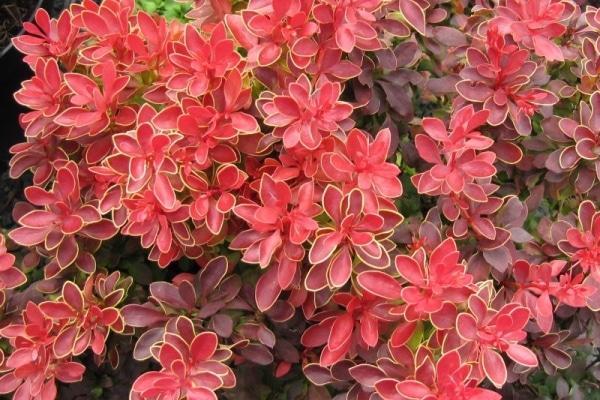

Flowering and fruiting
The flowers of the plant are bisexual, single or in inflorescences, bloom in the last decade of May - in early June, pollinated by bees. Attention is drawn to the fruits of barberry, ripening in September, October, attracting attention with their bright red color and having 1-5 oblong seeds.
Growing area
Barberry loves to settle in Transcaucasia, Southern and Eastern Europe, Siberia, in the Urals in dry, light areas near forests, on mountain slopes. The plant is found in central Russia, in the south of Europe, in the Crimea.
Preparing plants for winter
The medicinal properties of common barberry have been known since ancient times. It is often used to treat various ailments.And at present, different parts of the plant act as raw materials for the preparation of decoctions, infusions and extracts. Almost all parts of the bush, from leaves to berries, have useful properties.
Barberry is used as a hemostatic agent. It is effective in treating the gallbladder, gums, urinary tract, liver and kidneys. It is also used for gout, rheumatism, jaundice, radiculitis and spleen pathology. The fruits of the plant have a laxative effect. They can be consumed to increase appetite.
With the arrival of autumn, the soil around the bush is mulched with soft peat and dry foliage. Plants that have not reached the age of five must be covered before the arrival of cold weather. If the bush is too voluminous, then its branches are pulled together with a rope, and a cylinder of mesh is built around the plant. The inner space inside the structure is covered with foliage.

